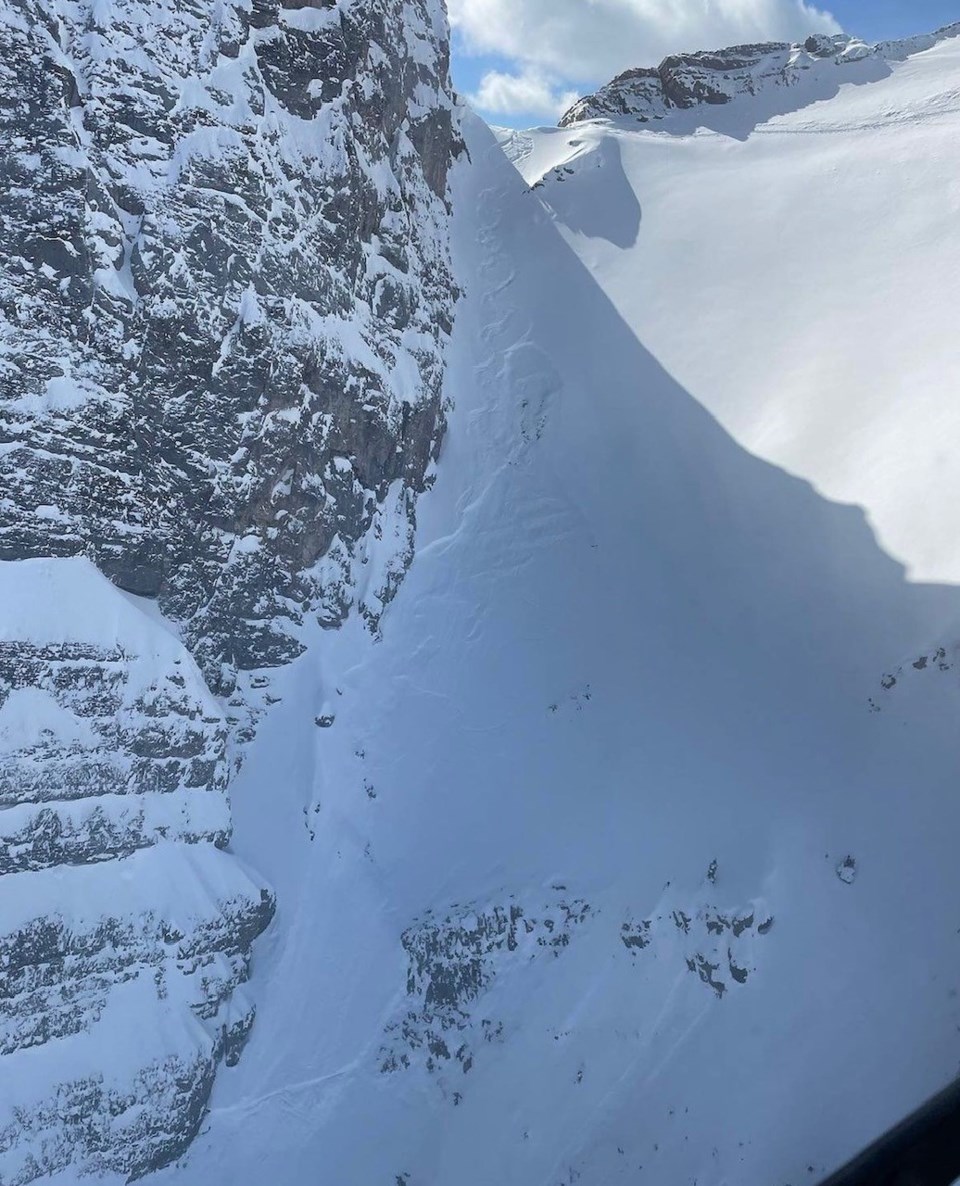KANANASKIS – Several recent near misses involving skier-triggered slides is a stark reminder of the touchy avalanche conditions in the region this season.
According to Kananaskis Mountain Rescue, no one was swept away or injured in the March 28 avalanche on Miners Gully – a classic ski above Canmore – which looks to have stepped down a few times to ground and ran to the middle of the normal runout.
The size 2.5 slab avalanche in Miners Gully is thought to have been skier-triggered based on tracks entering and exiting the avalanche path, and was documented on the Mountain Information Network (MIN).
On April 5, Avalanche Canada reported a large skier-triggered avalanche in Hidden Bowl near Halfway Hut north of the Lake Louise area – and this happened when the avalanche danger was rated moderate.
"Three skiers skied the line one at a time and regrouped in a safe spot. The avalanche was triggered by the last party member approximately 3/4 of the way down the slope on a slight variation in terrain," states the MIN report. "No involvement or injuries."
A third skier accidental slide, estimated to be 200 metres wide and 450 metres long, was reported on the north side of Hero’s Knob in K-Country on March 25.
K-Country rescue specialists say mid to late April can sometimes be the best time of the year for backcountry enthusiasts in the Kananaskis region because of the start of more stable conditions – but that’s not the case this year.
“We may not have conditions set up well for that just because of that deep layer is so incredibly weak, so I think it’s going to require a bit more of a disciplined approach this year,” said Jeremy Mackenzie, mountain rescue specialist and team leader of Kananaskis Mountain Rescue.
“It’s still probably best to stick to low angle terrain and minimize overheard hazard throughout the rest of the season.”
Touchy avalanche conditions this winter are associated with a deep persistent slab, due to a dry start to winter in November and December combined with rainfall in late November that created an ice crust and further deteriorating snowpack.
While this deep persistent slab in the snowpack is not uncommon for Kananaskis and Banff National Park, experts say it is a one in 10-year problem in the interior and coastal mountain ranges in neighbouring British Columbia, where the avalanche death toll has risen to 12 so far this 2022-23 winter.
“It’s fairly well known across the backcountry recreational public this year, and there’s been lots of good messaging that we have unusually weak basal layers, even unusual for the eastern Rockies which has often got a weak layer, but this year is even worse than normal,” said Mackenzie.
“The problem with that is it becomes this low-probability, high-consequence avalanche problem, which are always extremely difficult to forecast and they’re also difficult as a backcountry user to weigh your risks, because a lot of days nothing is going to happen, and when it does happen, it can be something quite large and quite deep and obviously have pretty dire consequences.”
Mackenzie said there is a semi-active weather pattern for the next few days.
“The big change when we’re going to get more concerned is when it goes back to bluebird skies and hot temperatures,” he said.
“Certainly, we just got a bit of load last night (April 2) – anywhere between 10 and 25 cm depending in which valley – but most of the area only got 10cm and I don’t think that’s going to wake the dragon just yet.”
As of April 15, the avalanche danger rating was moderate above and at treeline in Kananaskis Country, as well as in Banff, Yoho and Kootenay national parks.
The North American public avalanche danger scale is a system that rates avalanche danger based on the likelihood, size, and distribution of avalanches. It consists of five levels, from least to highest amount of danger: low, moderate, considerable, high, and extreme.
Under considerable danger, natural avalanches are possible and human-triggered ones are likely. According to Avalanche Canada, historically, the highest number of avalanche fatalities have occurred when the danger was rated considerable.




